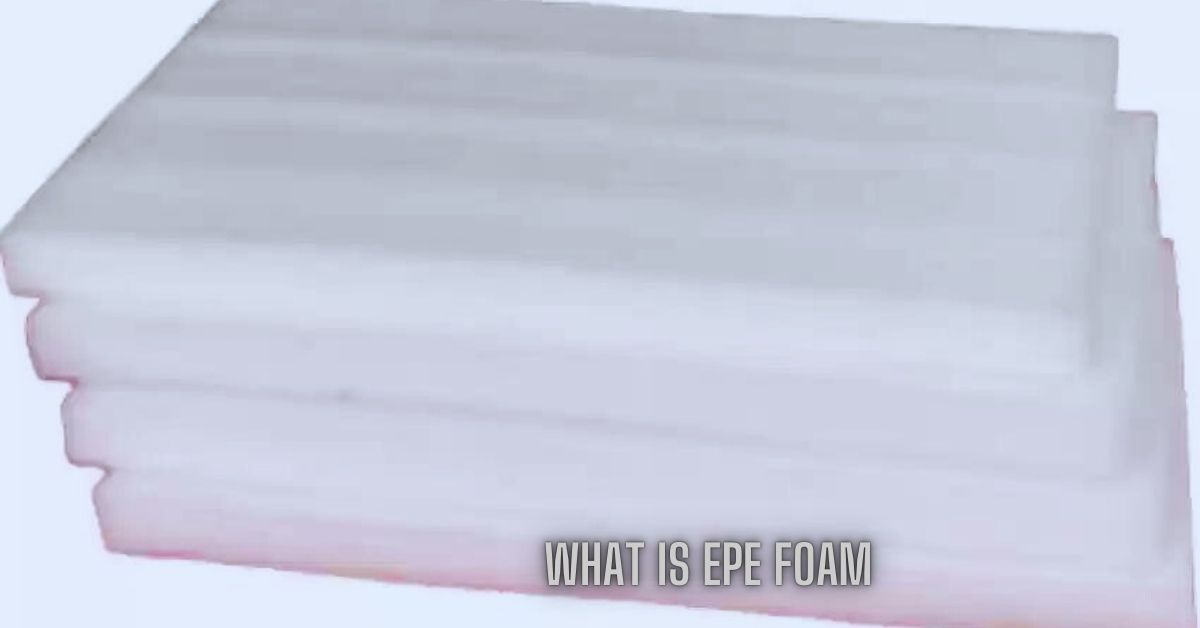Introduction
What is EPE foam? Expanded Polyethylene (EPE) foam is a versatile and widely used material known for its lightweight, resilient, and insulating properties. This material plays a crucial role in various industries, including packaging, cushioning, and insulation applications. Understanding what EPE foam is and how it functions can provide insights into its many uses and benefits.
Composition and Structure of EPE Foam
What is EPE foam made of? EPE foam is a type of closed-cell foam made from polyethylene, a thermoplastic polymer. Its structure consists of tiny, closed cells filled with air, which grants the foam its excellent cushioning and insulation properties. The foam is produced by expanding polyethylene beads with heat, causing them to swell and form a cellular structure. This unique structure is what defines EPE foam’s characteristics.
Production Process of EPE Foam
What is EPE foam’s production process? The creation of EPE foam involves several key steps. Initially, polyethylene beads are pre-expanded using steam to form a foamed structure. These beads are then further expanded and fused through a molding process, resulting in sheets or rolls of foam. The foam is subsequently cut and shaped according to specific needs. This process ensures that EPE foam maintains its integrity and delivers consistent performance across various applications.
Properties of EPE Foam
What is EPE foam’s properties? EPE foam is known for its numerous advantageous properties. Its closed-cell structure effectively absorbs shock and provides cushioning, which is crucial for protecting delicate items during transport. Additionally, EPE foam is resistant to moisture, chemicals, and UV radiation, enhancing its durability and suitability for outdoor use. Its lightweight nature contributes to cost savings in shipping and handling.
Applications of EPE Foam
What is EPE foam used for? EPE foam has a broad range of applications across different industries. In packaging, it protects products from damage during transit. Its cushioning properties make it ideal for wrapping fragile items such as electronics, glassware, and ceramics. In construction, EPE foam serves as an insulating material, providing both thermal and acoustic insulation for buildings. It is also utilized in sports equipment, automotive parts, and consumer goods.
Advantages of EPE Foam
What are the advantages of EPE foam? The benefits of EPE foam are numerous. Its ability to cushion and protect products helps reduce the risk of damage, leading to fewer returns and losses. The material’s resistance to moisture and chemicals ensures that it remains effective and durable in various environments. Additionally, EPE foam’s lightweight nature can lead to cost savings in shipping and handling. Its versatility and ease of processing further enhance its appeal for a wide range of applications.
Disadvantages and Limitations of EPE Foam
What are the limitations of EPE foam? Despite its many advantages, EPE foam does have some limitations. Its closed-cell structure, while effective for cushioning, may not offer the same level of protection as other foam types, such as polyurethane foam. Additionally, EPE foam is not biodegradable, raising environmental concerns regarding its disposal. Although it is recyclable, the recycling process can be complex and is not always readily available.
EPE Foam vs. Other Foam Types
What is EPE foam compared to other foam types? When comparing EPE foam to other foam types, such as polyurethane foam or expanded polystyrene (EPS) foam, several differences emerge. Polyurethane foam, known for its superior cushioning and flexibility, can be more expensive than EPE foam. EPS foam, while similar in its closed-cell structure, is more brittle and less durable. Each foam type has distinct advantages and is suited to different applications based on specific requirements.
Environmental Impact of EPE Foam
What is the environmental impact of EPE foam? The environmental impact of EPE foam is a significant concern. Although EPE foam is recyclable, the recycling process can be challenging, and not all facilities are equipped to handle it. The production of EPE foam involves fossil fuels and chemicals, contributing to environmental pollution. However, ongoing efforts are focused on developing more sustainable alternatives and improving recycling methods to address these issues.
Innovations and Future Trends in EPE Foam
What are the future trends in EPE foam? The field of EPE foam is continually evolving, with innovations aimed at enhancing its performance and sustainability. Researchers are working on improving the material’s properties, such as increasing its insulation capabilities or developing biodegradable versions. Advances in production techniques and recycling processes are also being explored to address environmental concerns and improve the overall efficiency of EPE foam use.
EPE Foam in Packaging Solutions
What is EPE foam’s role in packaging? In the packaging industry, EPE foam is crucial for ensuring that products arrive in optimal condition. Its cushioning properties help absorb shocks and vibrations, preventing damage during transit. EPE foam is used in various packaging solutions, including custom-designed inserts, protective wraps, and cushioning materials. Its ability to be easily shaped and molded makes it a versatile choice for packaging applications.
EPE Foam in Construction and Insulation
What is EPE foam used for in construction? In the construction industry, EPE foam is valued for its insulation properties. It is used in various applications, such as insulating walls, floors, and roofs. The material’s thermal resistance helps maintain indoor temperatures, reducing energy consumption and improving building efficiency. Additionally, EPE foam provides acoustic insulation, minimizing noise transmission between rooms or from external sources.
EPE Foam in Automotive and Sports Equipment
What is EPE foam’s role in automotive and sports equipment? EPE foam impacts the automotive and sports equipment industries significantly. In automotive applications, it is used for interior cushioning, providing comfort and safety for passengers. It is also employed in automotive packaging to protect parts during shipping. In sports equipment, EPE foam is used to manufacture protective gear, such as helmets and padding, due to its shock-absorbing qualities.
EPE Foam in Consumer Goods
What is EPE foam used for in consumer goods? In the consumer goods sector, EPE foam enhances functionality and protection. It is commonly found in items such as consumer electronics, where it provides cushioning during shipping and handling. Additionally, EPE foam is used in household products, including furniture and bedding, to offer comfort and support. Its versatility makes it a valuable material for improving the quality and durability of consumer goods.
Challenges and Opportunities in the EPE Foam Industry
What are the challenges and opportunities in the EPE foam industry? The EPE foam industry faces several challenges, including environmental concerns and competition from alternative materials. However, these challenges also present opportunities for innovation and improvement. Developing more sustainable materials and advanced recycling methods can help address environmental issues. Additionally, ongoing research and development efforts aim to enhance EPE foam’s performance and expand its applications across various industries.
Conclusion
What is EPE foam’s significance? EPE foam is a highly versatile and valuable material with a wide range of applications across different industries. Its unique properties, including cushioning, insulation, and resistance to moisture and chemicals, make it a preferred choice for packaging, construction, automotive, and consumer goods. While there are challenges related to its environmental impact, ongoing advancements in technology and sustainability efforts offer promising solutions. As the industry continues to evolve, EPE foam is likely to remain an important material in both current and future applications.
Read More: Prerna Malhan Age, Milestones, and Her Rise in the Digital World






